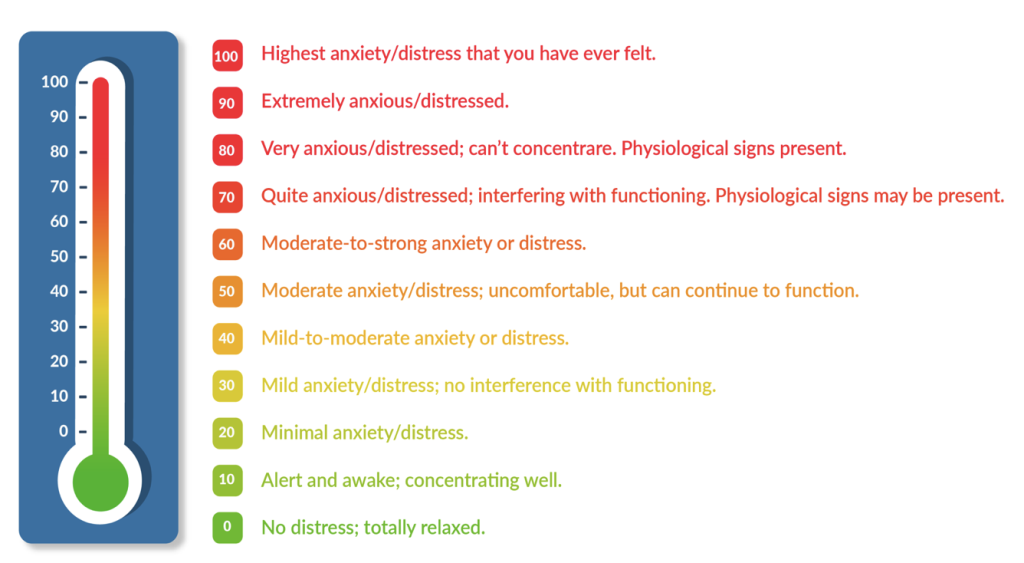Discriminating which strategies work for you and which don’t is a useful skill to develop. Monitoring your distress level using a Subjective Units of Distress Scale (or SUDs), like the one below, can help you to track the effectiveness of the self-soothing methods you use. Notice how your distress level drops when you implement a strategy. An SUD scale can also help you to monitor your level of distress and intervene before it escalates and reaches intolerable levels that impair your functioning.

Exercise:
Consider how you self-soothe when you are distressed. Can you recall what your body was feeling before you tried to self-soothe? Consider your breathing, heart rate or physical sensations like tension, slackness, tingles, lightness, heaviness and flutters. Recognising these bodily signals early on can help you to intervene before your distress escalates.
Now consider the feeling in your body after you self-soothe. Where are you on the SUD scale now? What is the long-term impact of this self-soothing method? Is it helpful or harmful to you? Does it fulfil a social role for you? If it’s harmful, can you find another, healthier way of attending to those bodily states?
Note: If self-care strategies, emotional regulation techniques and social support aren’t proving to be effective for you – it’s time to seek professional support.

